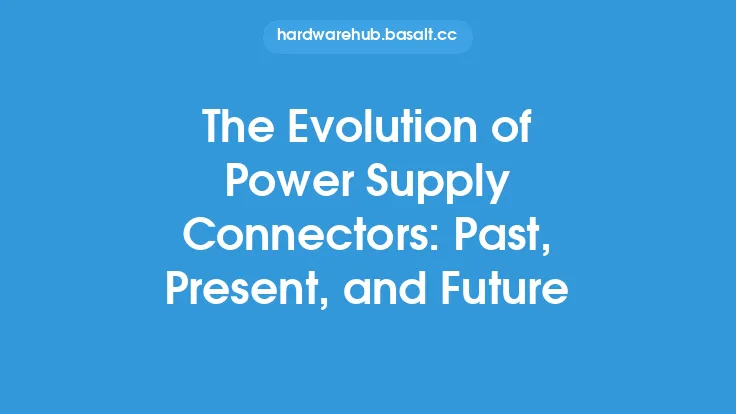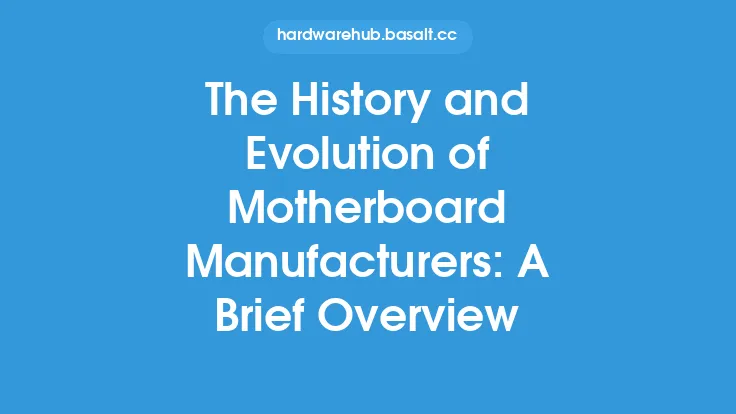The concept of benchmarking graphics processing units (GPUs) has been around for several decades, with its roots dating back to the early days of computer graphics. In the past, GPU benchmarking was a relatively simple process, involving basic tests such as 2D and 3D graphics rendering, as well as texture mapping and lighting. However, as GPUs evolved and became more complex, so did the benchmarking process. Today, GPU benchmarking is a sophisticated and multifaceted field, involving a wide range of tests and metrics to evaluate the performance of modern GPUs.
History of GPU Benchmarking
The history of GPU benchmarking can be divided into several distinct eras, each marked by significant advancements in GPU technology and benchmarking methodologies. In the early days of computer graphics, benchmarking was primarily focused on 2D graphics performance, with tests such as Windows graphics rendering and GUI performance. The introduction of 3D graphics in the 1990s marked a significant shift in benchmarking, with the emergence of 3D graphics benchmarks such as 3DMark and Quake. These early 3D benchmarks focused on basic graphics rendering, texture mapping, and lighting, and were used to evaluate the performance of early 3D graphics accelerators.
Evolution of Benchmarking Methodologies
As GPUs became more powerful and complex, benchmarking methodologies evolved to keep pace. The introduction of programmable shaders in the early 2000s marked a significant milestone in GPU benchmarking, as it enabled the creation of more sophisticated and realistic graphics benchmarks. The development of DirectX and OpenGL APIs also played a crucial role in the evolution of GPU benchmarking, as they provided a standardized framework for developers to create graphics-intensive applications. Modern GPU benchmarking involves a wide range of tests, including synthetic benchmarks, game benchmarks, and compute benchmarks. Synthetic benchmarks, such as 3DMark and Unigine Heaven, use predefined graphics workloads to evaluate GPU performance, while game benchmarks, such as those used in Frame Rating and FPS measurements, use real-world game engines to evaluate GPU performance in actual gaming scenarios. Compute benchmarks, such as those used in scientific simulations and machine learning, evaluate the GPU's ability to perform complex mathematical calculations.
Impact of GPU Architecture on Benchmarking
The architecture of modern GPUs has a significant impact on benchmarking methodologies. The introduction of multi-core GPUs, for example, has led to the development of multi-threaded benchmarks that can take advantage of the GPU's parallel processing capabilities. The use of GPU acceleration in applications such as video encoding and scientific simulations has also led to the development of specialized benchmarks that evaluate the GPU's performance in these areas. Additionally, the increasing use of artificial intelligence and machine learning in modern applications has led to the development of benchmarks that evaluate the GPU's performance in these areas, such as deep learning and neural networks.
Role of Power Consumption in GPU Benchmarking
Power consumption has become an increasingly important factor in GPU benchmarking, as it has a direct impact on the overall performance and efficiency of the GPU. Modern GPUs are designed to provide high performance while minimizing power consumption, and benchmarking methodologies have evolved to reflect this. Many modern benchmarks, such as 3DMark and Unigine Heaven, include power consumption measurements, which provide a more complete picture of the GPU's performance and efficiency. The use of power consumption metrics, such as watts per frame, has also become more prevalent, as it provides a more accurate measure of the GPU's performance per unit of power consumed.
Future of GPU Benchmarking
The future of GPU benchmarking is likely to be shaped by several factors, including the increasing use of artificial intelligence and machine learning, the development of new GPU architectures, and the growing importance of power consumption and efficiency. As GPUs continue to evolve and become more complex, benchmarking methodologies will need to adapt to keep pace. The use of machine learning and artificial intelligence in benchmarking is likely to become more prevalent, as it provides a more accurate and efficient way to evaluate GPU performance. Additionally, the development of new GPU architectures, such as those using quantum computing and neuromorphic computing, will require the development of new benchmarking methodologies that can accurately evaluate their performance.
Challenges and Limitations of GPU Benchmarking
Despite the advancements in GPU benchmarking, there are still several challenges and limitations that need to be addressed. One of the main challenges is the lack of standardization in benchmarking methodologies, which can make it difficult to compare the performance of different GPUs. Additionally, the increasing complexity of modern GPUs has made it more difficult to create accurate and comprehensive benchmarks. The use of benchmarking results to make purchasing decisions can also be misleading, as they may not reflect the actual performance of the GPU in real-world applications. Furthermore, the growing importance of power consumption and efficiency has led to the development of new benchmarking methodologies that prioritize these metrics, but these methodologies are still in their infancy and require further development.
Conclusion
In conclusion, the evolution of GPU benchmarking has been a long and complex process, shaped by significant advancements in GPU technology and benchmarking methodologies. From its humble beginnings in the early days of computer graphics to the sophisticated and multifaceted field it is today, GPU benchmarking has played a crucial role in evaluating the performance of modern GPUs. As GPUs continue to evolve and become more complex, benchmarking methodologies will need to adapt to keep pace, taking into account the increasing importance of power consumption, efficiency, and artificial intelligence. By understanding the history, evolution, and challenges of GPU benchmarking, we can better appreciate the complexities of modern GPU performance evaluation and make more informed decisions when it comes to choosing the right GPU for our needs.





